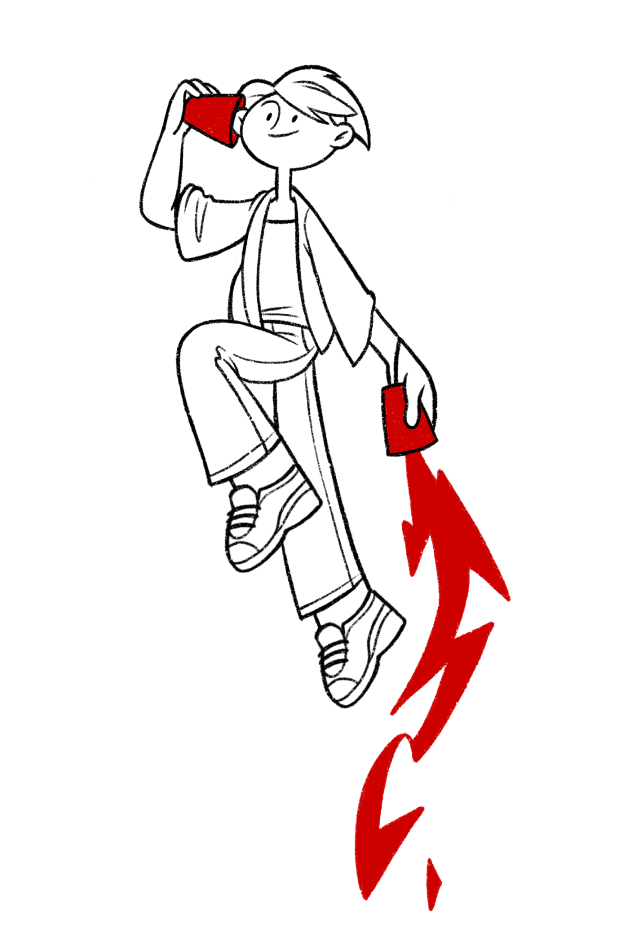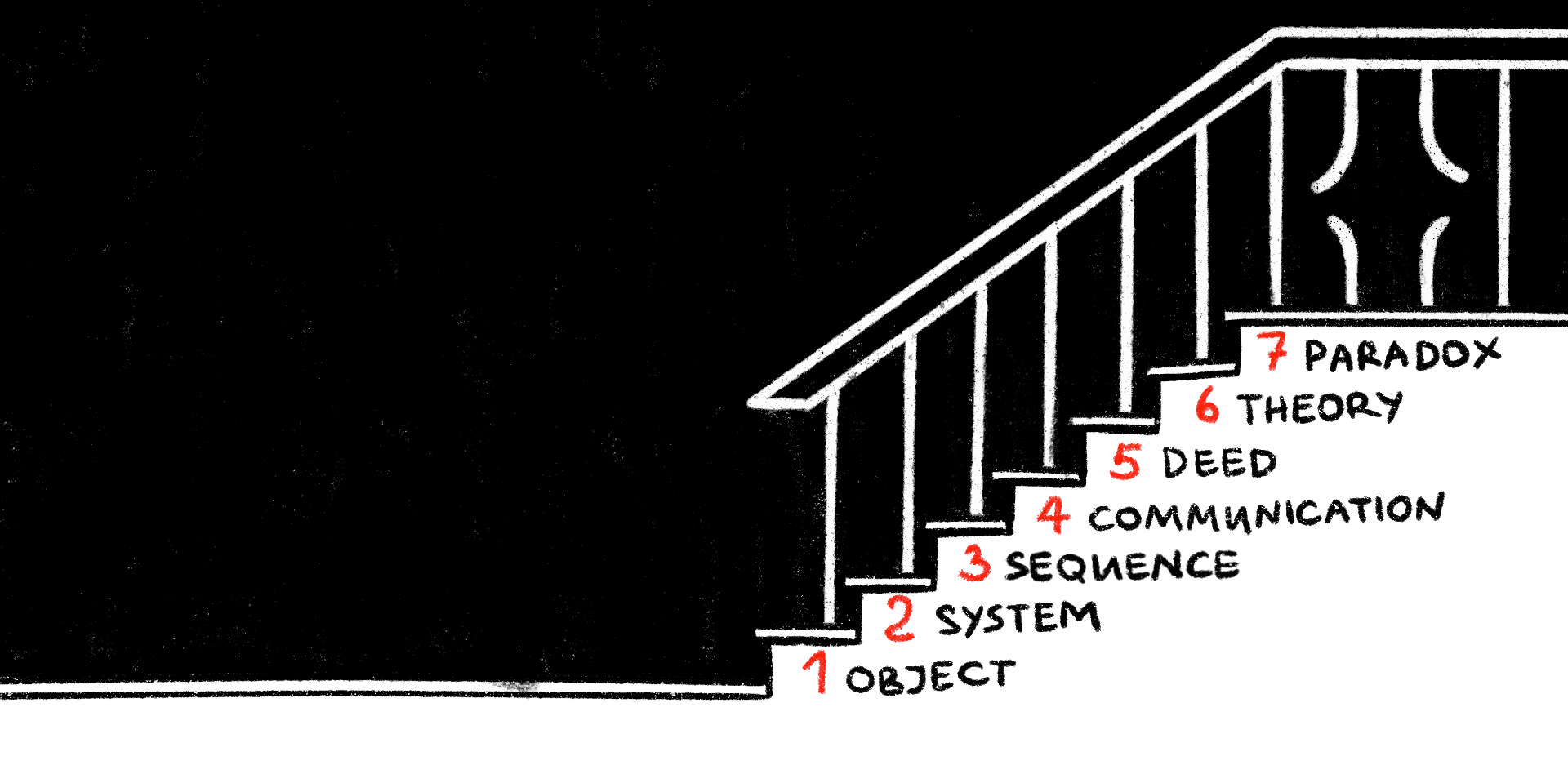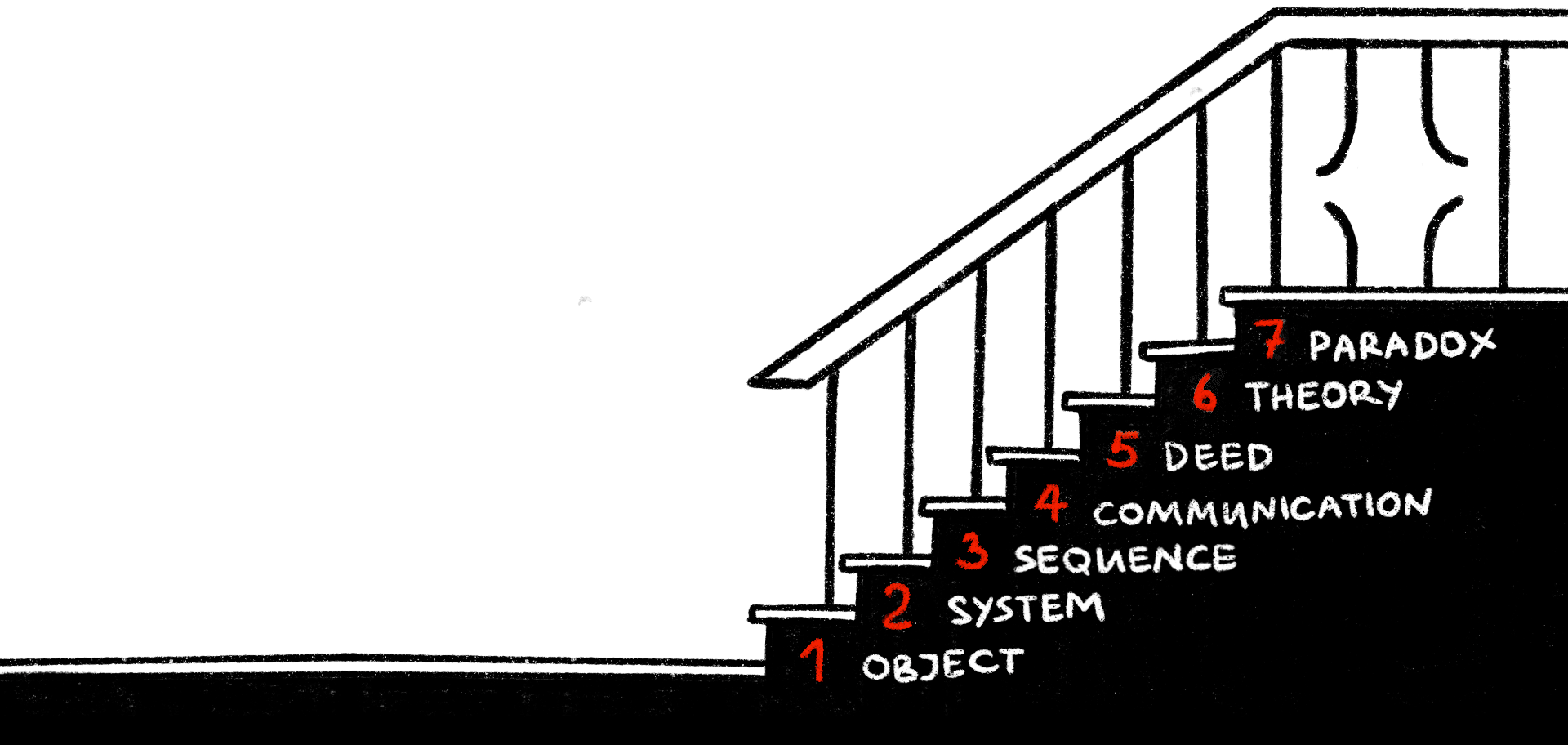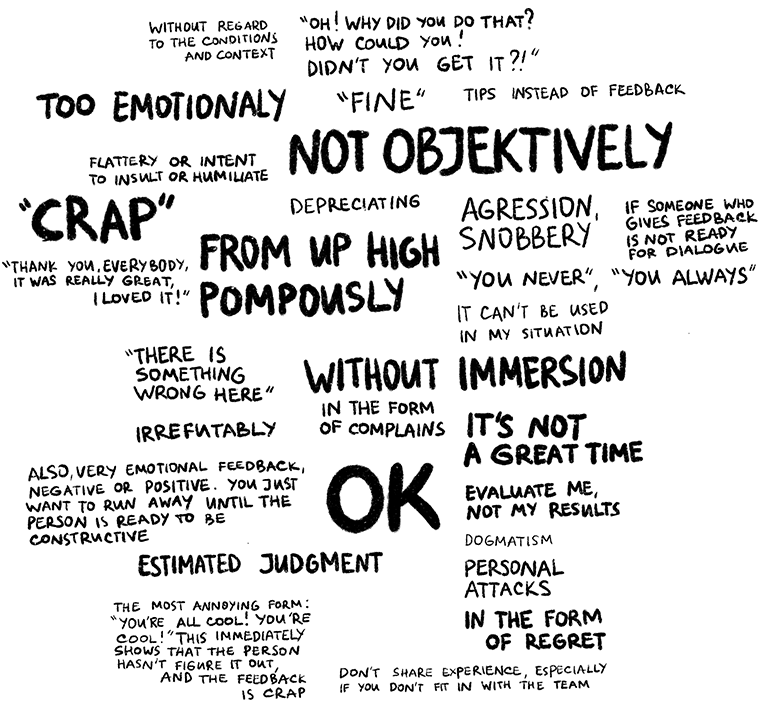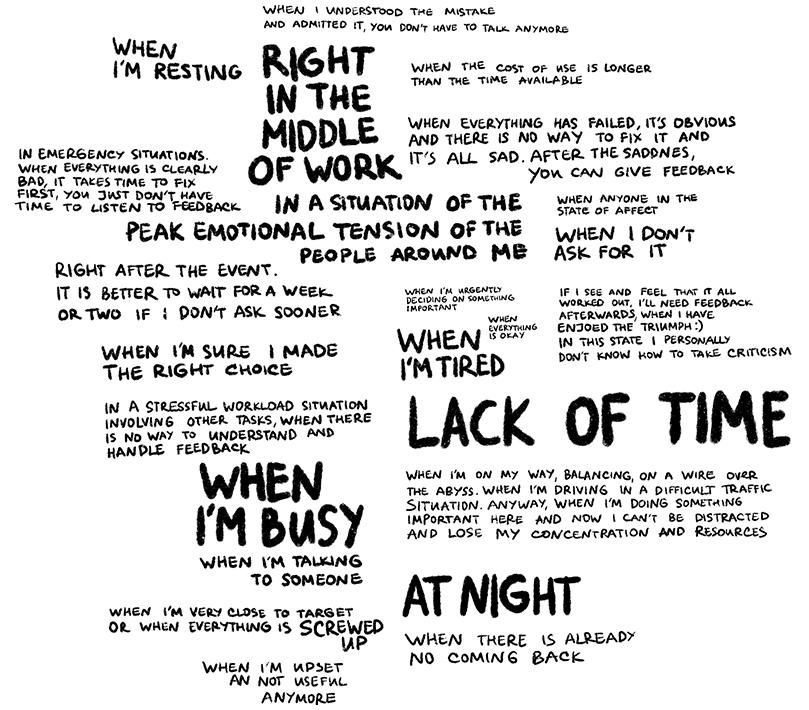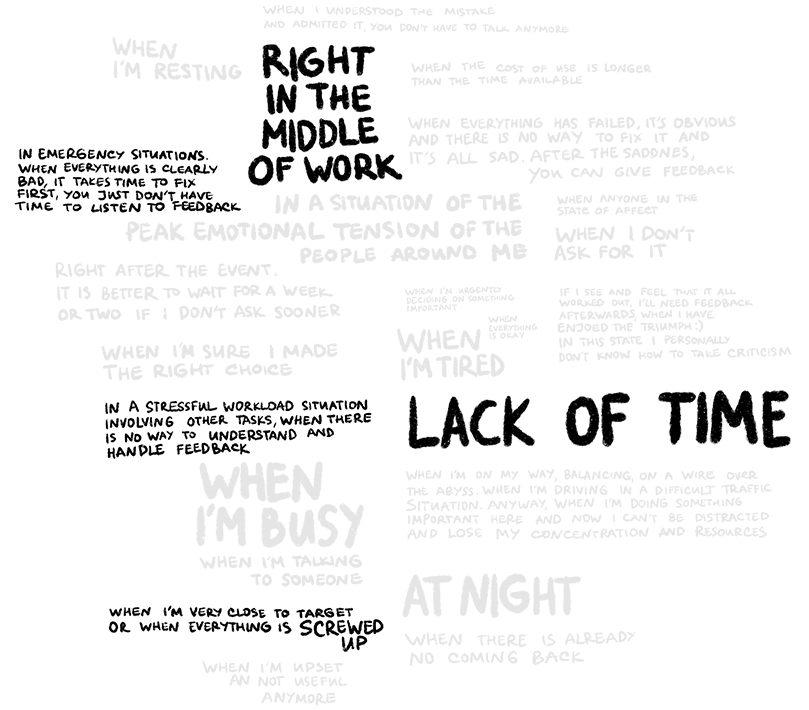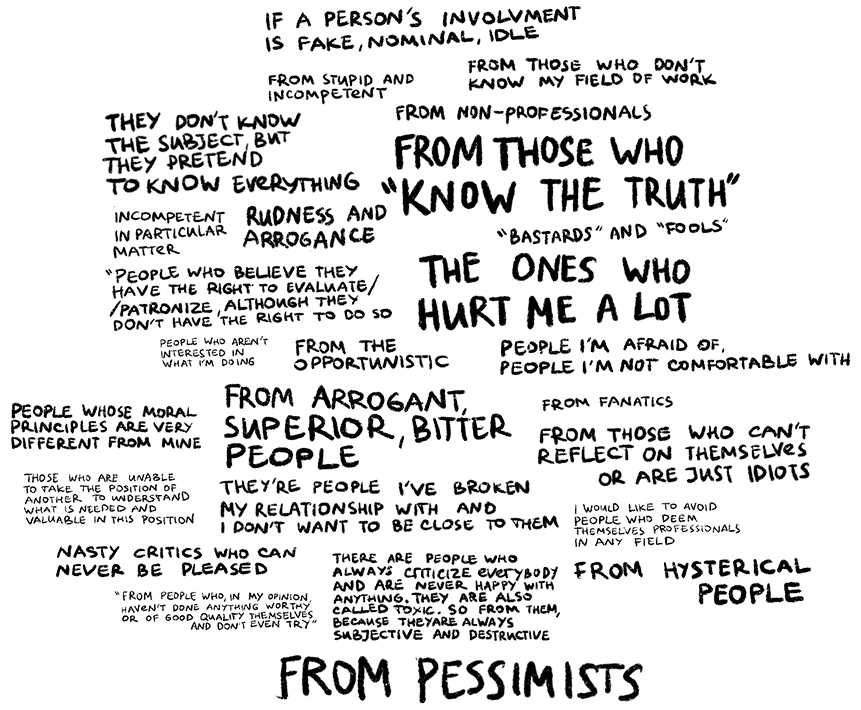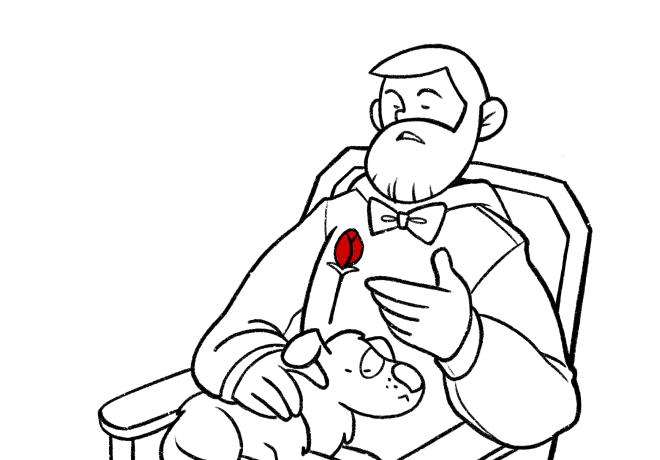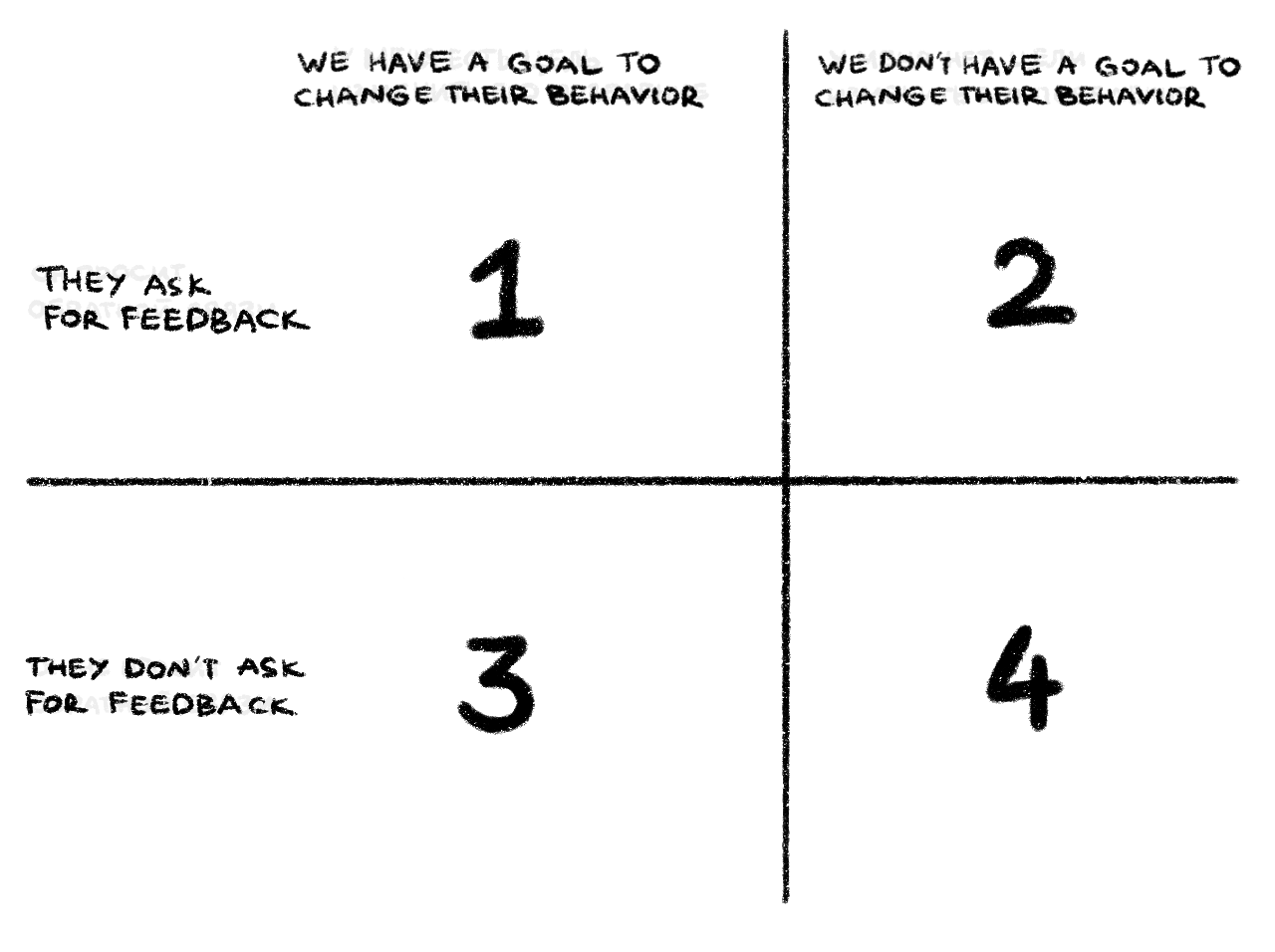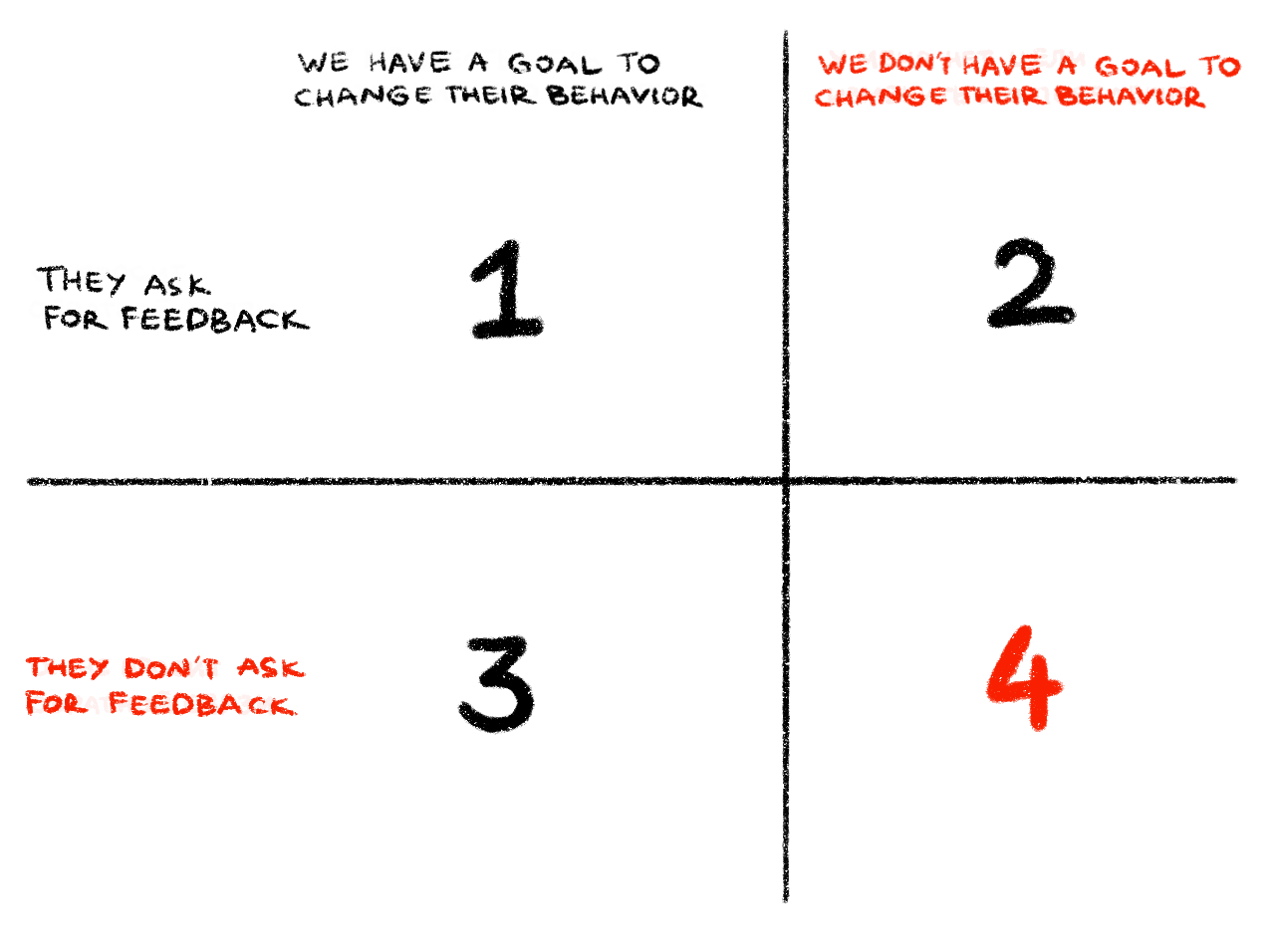1.
Get the permission for feedback, provide a request for feedback.
It is usually enough to ask for help. When you need someone to take feedback from you, show them your problem. Often, when I have to do that, I say, "Look, I have a problem with our design. At the moment, it doesn't solve my problem, and I need to make sure that the user wants to go further with it. Help me." In this sense, I actually become a Junior.
2.
Make sure you want the person you are giving feedback to benefit, and that they know it.
If they don't admit that the action is really good for them, then it doesn't count. That is, you can't say, "Joe, I know you have to wear a hat." It doesn't mean you're doing anything for him.
3.
Show that they're important to you.
It is important! This item is not about insincerity. If you want to be able to give feedback, learn to feel emotions. One of the most difficult skills of an art director is finding something to enjoy in the word "world" written with poop on a wall. It's important to find something to admire. By the way, it means that if a designer is not important to you, you won't be able to be a senior to him.
4.
Understand the barrier they have reached and show them a way to overcome it and the place for the next step.
If the person has reached a barrier, it means that they are in a situation when they are unable to think for themselves (use a skill they have already mastered) and they have to reflect (strain their mind). They have to spend their cognitive resources.
This is our task here:
- to show them what the barrier is and how it works;
- to suggest a method with which the barrier can be overcome;
- to see how they use the technique and give feedback on the attempt to help assess the success of the attempt and help learn the technique.
I. e., to make sure that next time they do it, they don't have to strain themselves in such a situation and so they can just apply the technique.









.png)




